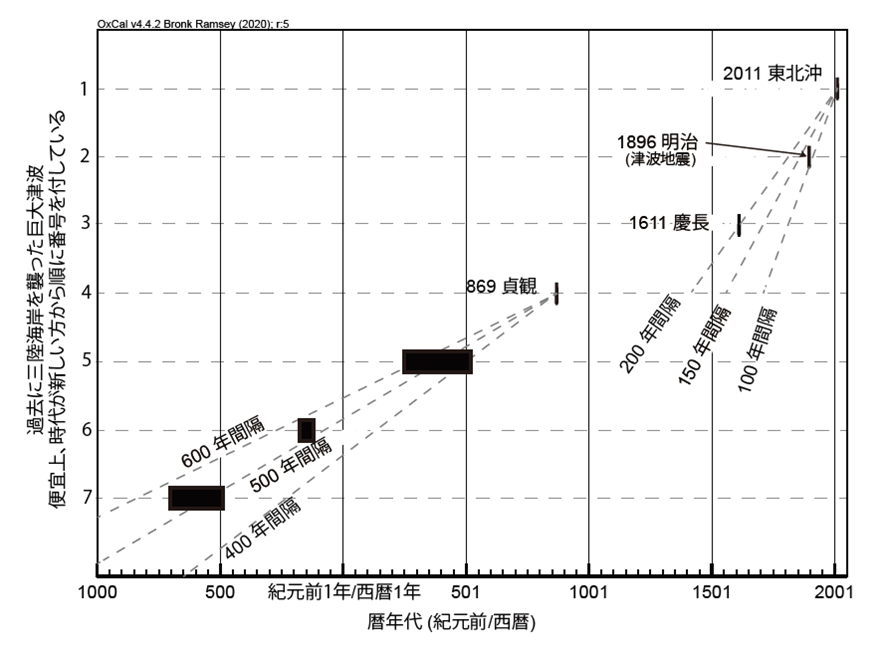DATE2022.02.03 #Press Releases
Physical evidence of the 1611 Keicho Oshu Earthquake Tsunami discovered on the northern Sanriku Coast.
Disclaimer: machine translated by DeepL which may contain errors.
-New findings on the frequency of giant tsunamis occurring along the Japan Trench
International Research Institute of Disaster Science, Tohoku University
Graduate School of Science, Tohoku University
Graduate School of Science, The University of Tokyo
Graduate School of Science, Hokkaido University
Atmosphere and Ocean Research Institute, The University of Tokyo
Summary
Tsunami deposits have been used as a means to estimate the frequency and magnitude of past tsunamis. However, strata are not always continuously deposited, and it is possible that some strata from a certain period, including tsunami deposits, are missing and traces of tsunamis may have been missed.
To address this issue, a research group led by Assistant Professor Takashi Ishizawa of the International Research Institute of Disaster Science, Tohoku University, has developed a method of "vertically continuous, millimeter-spaced, high-density dating of strata containing tsunami deposits to confirm that no strata are missing chronologically with respect to the period of interest. Furthermore, by applying this method to inland strata in the northern part of the Sanriku coast (Noda Village, Iwate Prefecture) that were inundated only by giant tsunamis, we were able to reconstruct the history of the giant tsunami that caused damage to a wide area of the Sanriku coast.
The results indicate that the 1611 Keicho-Oshu tsunami in the Sanriku region was a giant tsunami of the same magnitude as the 2011 Tohoku-oki tsunami and the 1896 Meiji Sanriku tsunami. In addition, it was previously pointed out that the Kyotoku tsunami of 1454 may have hit the Sanriku coast, but this study reveals that the Kyotoku tsunami did not hit the northern part of the Sanriku coast. Some have suggested that the frequency of giant earthquake tsunamis occurring along the Japan Trench is approximately every 500 years (2011 Tohoku-oki tsunami, 1454 Kyotoku tsunami, 869 Sadakan tsunami), but this study reveals that the frequency is irregular (2011 Tohoku-oki tsunami, 1611 Keicho tsunami, 869 Sadakan tsunami). tsunami in 869). Furthermore, taking into account tsunami-earthquake1) origin tsunamis such as the 1896 Meiji Sanriku tsunami, the study indicates that giant tsunamis have occurred with particularly high frequency along the Sanriku coast over the past 400 years.
The results of this study were published in Quaternary Science Reviews on February 2, 2022.

Figure: Interval of occurrence of giant tsunamis in the northern to central part of the Sanriku Coast. Black squares indicate estimated tsunami ages.
Professor Kazuhisa Goto of Department of Earth and Planetary Science participated in this research.
For more information, please visit the Tohoku University website.


